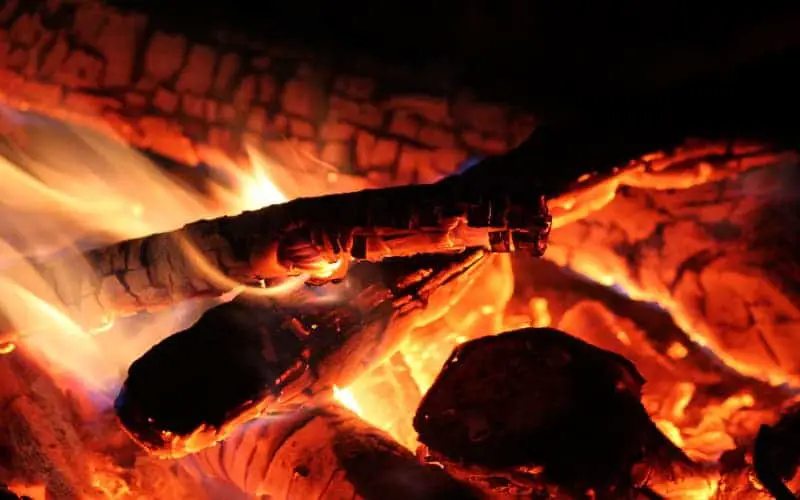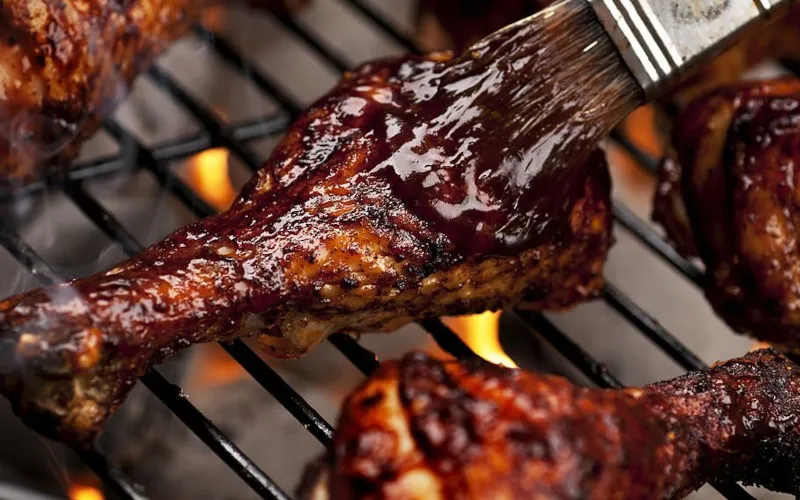Usually, a barbeque cannot be complete without the tasty and juicy slices of beef cuts. However, the flavor and tenderness of these slices are never similar, even after obtaining them from the same animal.
This is particularly true when you compare tri-tip and brisket. Tri-tips and briskets are the most popular beef cuts for smoking and barbeques.
However, there are many differences between these cuts, which you must be familiar with to pick the right chunk. Read on for a comprehensive review of each beef cut to learn more.
What is a Tri-Tip?
A tri-tip is a triangular-shaped cut obtained from the “tip” or bottom part of the sirloin. The cut assumes a triangular shape, thus its name. Tri-tips are popular because of their flavor and relatively low-fat content.
Butchers refer to these pieces as a steak rather than a roast. However, the scientific name of the cut is a tensor fasciae latae muscle.
Besides the tri-tip, these cuts are also referred to as a triangular roast or bottom sirloin butt.
What is a Brisket?
A brisket is a cut obtained from the breast or lower chest area. Typically, this cut consists of two major muscles: superficial muscles and deep pectorals.
These muscles are used to support the animal’s weight, which means that briskets are one of the toughest cuts of a cow. However, a brisket can turn into a juicy and tender barbeque when slow-roasted or smoked.
Differences Between Tri-Tip and Brisket
Since tri-tips and briskets are from different parts of a cow, these beef cuts are different in a range of particulars, including the size, texture, flavor, cooking style, and availability.
Read on, and let’s discuss the differences based on each of these particulars as you look forward to purchasing the right beef cut.
1. Cost and Meat Yield
If you are on a budget and looking for a beef cut that fits the budget, you might want to purchase brisket over tri-tip. The market price of brisket ranges from $3-$5 per pound depending on your location.
On the other hand, tri-tip can cost double this price, which means that its per-pound price ranges from $6-$10 depending on the location.
However, when you prepare, tri-tip has a higher meat yield than brisket. This is because brisket tends to be fattier than tri-tip.
Thus, you are likely to trim off and discard about 25%-30% of the brisket’s total weight before cooking or have this weight meltdown when you put it on the smoker.
As a result, when you purchase 16lbs of brisket, you will end up with at least 12lbs in the smoker. On the other hand, tri-tip tends to deliver almost 100% meat yield, which means that despite the high costs, tri-tip tends to provide you with 100% the value for your money.
2. Size
Size-wise, brisket is bigger than tri-tip. Ideally, a whole trip-tip can weigh somewhere between 3 pounds up to 4 pounds. On the other hand, brisket weighs 8 pounds up to 20 pounds.
On that note, we recommend tri-tip as a better beef cut for entertaining a small group of up to six persons. While entertaining bigger groups, brisket is a better option.
However, this doesn’t mean that you cannot purchase tri-tip for large groups or brisket for small parties.
If you need a tri-tip beef cut for feeding a lot of people, be sure to contact your merchant in advance to ensure that they can save you the amount you want. On the other hand, you can purchase brisket cuts for smaller parties.
In particular, brisket can be cut into two sections, but note that each of these sections serves different purposes.
- Point cut: A point cut features a triangular shape which is ideal for shredding. Point cuts have more intense flavors, and these cuts have a lot of fat running them than a flat cut.
- Flat cut: This part is mostly available in square shapes or rectangular shapes. Flat cuts bear less amount of fat, with the fatty layer being based on the bottom. Moreover, this cut is more expensive than a point cut.
3. Cooking Method
Tri-tip is a tender steak, which means that it is far much easier to prepare than brisket. On the other hand, brisket is a combination of two tough muscles, which means that it takes a lot of time before it is broken down to tender meat ready for consumption.
To prepare tri-tip, you can smoke it with indirect heat for 45 minutes to an hour and move it directly over the charcoal so that it can get a little sear on the outside.
Brisket on the other hand can take 6-14 hours of preparation depending on the cooking technique. However, we shall cover this in the how to prepare section. So, keep reading.
4. Flavor
There is a slight variance in the flavor of tri-tip and brisket. Tri-tip delivers a taste that is quite similar to that steak. In particular, it offers a beefy flavor coupled with buttery notes, despite it being derived from the lean part of the cow.
On the other hand, brisket provides a beefy taste with more dimension because of the bark and smoke rings that develop due to the long cooking process.
5. Availability
Generally, tri-tip isn’t as readily available as brisket. This can be explained by the fact that there are two tri-tips per animal, and worse still, tri-tip is usually in high demand, meaning that their supply cannot meet the demand.
On the other hand, brisket is quite easy to find, with the ability to locate a point-cut or flat-cut brisket.
Tri-Tip or Brisket: Which is Better?
Deciding if brisket is better than trip-tip or tri-tip is better than brisket requires considering different factors. For instance, which taste would you prefer?
How much time do you have to prepare your beef cut?
How many people are you looking forward to feeding?
How much are you willing to pay for the beef cut?
Reasons to Prefer Brisket
There are several reasons you should prefer brisket over tri-tip beef cuts. Such reasons include:
- When looking for a cost-effective way to feed a large crowd.
- If smoking is your profession and you want to take the sheer pride that accompanies a well-prepared piece of brisket.
- When looking out for your health. This is based on the fact that brisket contains high levels of oleic acid, which helps to drop bad cholesterol levels and increase the good cholesterol levels of your body.
Reasons to Prefer Tri-Tip
- When feeding small groups of up to 6 people.
- If you are a beginner looking for a beef cut that is easy to prepare and cook.
- When you do not have the whole day to prepare your beef cut and looking for a cut that takes less time to cook.
Steps to Prepare and Cook Tri-Tip
- Marinate your tri-tip if you prefer. (However, this is not a must).
- Season or dry rub your cut using your favorite seasonings.
- Set your smoker at the desired temperature of 250 degrees Fahrenheit up to 275 degrees Fahrenheit.
- Sear your cut on high heat for at least 45 seconds on either side. This step can help to lock in the juices. (However, you can sear your cut after smoking based on your preference).
- Put your tri-tip in a cooking dish and place it in the smoker. Please leave it to cook for at least one hour until the internal temperature is 140°F.
- Once the meat is ready, leave it to cool for at least 20 minutes so the juices can settle to protect it from becoming tough and dry.
- Serve your tri-tip cut using a sharp knife against the grain for a tender slice.
Steps to Prepare and Cook Brisket
We recommend you smoke your brisket under slow and low heat for a tender cut.
- Season your brisket using your favorite toppings. Before doing so, ensure that your brisket is at room temperature. Rub the seasoning all over the brisket and leave the cut to sit up for at least two hours before putting it in the smoker.
- Prepare your smoker using your preferred wood chip flavors and set the smoker at temperatures ranging from 220°F to 225°F. See our reviews of the best wood for smoking brisket to get information on which wood too get. Since you are slow-cooking your brisket cut, ensure that these temperatures will remain consistent throughout the smoking process.
- Place the brisket into the smoker with the fat cap facing up. While cooking, the ideal internal meat temperature should be 195°F.
- Be patient as you wait for the brisket to cook. On this note, we recommend that you cook your piece by computing the cooking time at 2 hours for every pound.
- Once the brisket is ready, remove it from the smoker, wrap it in aluminum foil, and leave it to sit for at least an hour. This step allows the meat juices to settle equally for a tender piece of meat.
- Serve your brisket by cutting it using a sharp knife against the grain for a tender slice
Factors That Differentiate a Brisket and Tri-Tip
- Part of the animal the beef cut if found: A brisket is located in the front of the cow, i.e., the lower chest area below the chunk. On the other hand, a trip tip is based at the rear end of the cow, i.e., at the bottom of the sirloin.
- Cooking time: A trip-tip is smaller and tender, so it takes a short cooking time. On the other hand, brisket comprises two tough muscles, so it takes longer to cook.
- Favor: Trip delivers a rich beefy and buttery flavor. Brisket has a deep and beefy taste with more dimension because of the bark and smoke rings that develop due to the long cooking process.
- Weight and size: A tri-tip beef cut is a smaller piece of beef cut weighing 3 to 5 pounds. A brisket beef cut is a larger beef cut, and its weight ranges from 8 to 20 pounds.
- Fat content: Tri-tip is a lean beef with low-fat content. On the other hand, brisket is a fatty beef cut with more fat content. However, this depends on whether you purchase a point-cut brisket or flat-cut brisket.
- Texture: Tri-tip is a tender piece of beef cut and it is considered as more chewy compared to other steaks. Brisket is a tough beef cut since it comprises the muscles that support the weight of the animal.
- Price and availability: Trip-trip is pricier than brisket, while compared as per price per pound. However, brisket is readily available than tri-tip.
Frequently Asked Questions
Is Tri Tip Tender or Tough?
Tri-tip is a beef cut with a tender texture, which means that it takes a shorter time to prepare and cook. Brisket is a beef cut with a tough texture, which means that it takes a longer time to prepare and cook.
Should I Wrap My Tri Tip in Foil?
If you want to contain the moisture of your tri-tip beef cut, you can consider wrapping it using foil. However, if you do not mind having the moisture escape from the cut, then you must not wrap it using the foil.
What Temperature is Tri Tip Done?
When using a meat thermometer, you can cook your tri-tip at about 135°F for rare, 140°F for medium-rare, and 145°F for medium. However, we recommend that you cook tri-tip slowly at 220°F. After which you can reverse sear it on a hot grill for optimal taste and texture.
Is Brisket Cheaper Than Tri Tip?
Yes. Ideally, a trip-tip can cost you double the price it will cost you to purchase brisket. For instance, you can buy a brisket cut at $5 per pound and purchase a tri-tip cut at $10 per pound.
How Often Should You Flip Tri Tip?
When grilling your tri-tip on indirect heat, we recommend that you flip it every 7-10 minutes. You should avoid turning it too fast since this can drain the juices, resulting in dry and tough meat.
Do You Leave the Fat on the Tri Tip?
The decision on whether to trim the fat or cook your tri-tip untrimmed depends on the method you will use to cook your tri-tip. For instance, if you will be cooking your tri-tip on the stove or in the oven, you do not have to trim off the fat.
On the other hand, when grilling your tri-tip, consider trimming off the fat to prevent a grill flare-up.
What temperature Does Brisket Fall Apart?
Brisket cuts should cook at a temperature range of 200-210°F. However, the ideal temperature that will result in tender brisket is 203°F.
Will Brisket Get More Tender the Longer It Cooks?
Yes. For the best taste and tenderness, you must comply with the hour-per-pound rule. Professionals argue that a brisket cut should be tender when prepared one pound for 1.5 hours or two hours.
Therefore, ensure that you stick to this rule depending on the amount you want to prepare for a tender piece of brisket cut.
Why Did My Smoked Brisket Turn Out Tough?
If you choose the wrong brisket cut, you are most likely going to end up with tough brisket. At the same time, if you fail to cook the brisket for the recommended amount of time by undercooking it, your piece will end up tough.
Finally, failure to allow your brisket to rest in the cooler is another reason your smoked brisket will turn out tough.
What Temperature Do You Cook Tri Tip on a Gas Grill?
We recommend 120°F for a rare, 130°F for medium-rare, and 140°F for medium.
Conclusion
As it turns out, there are lots of differences between a tri-tip beef cut and a brisket beef cut. Each of these cuts is a large and popular beef cut for creating delicious dishes that will impress guests.
We recommend that pick the beef cut depending on the amount of time you have to prepare it, the method you will use to prepare your beef, and the number of guests you want to entertain so that you can end up with the best results.





